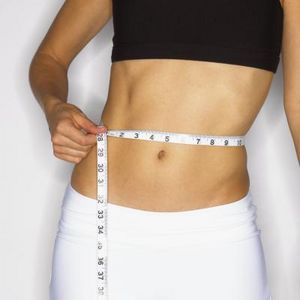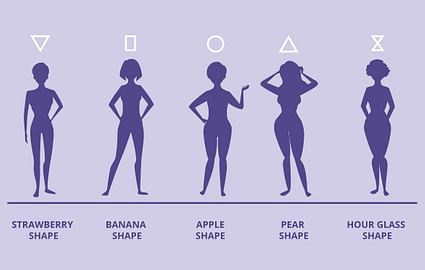
Introduction
Want to how to measure waist size ? Measuring the size of your waist can help you to understand your risk for certain health conditions that are related to your weight. Waist circumference alone cannot indicate that you have a medical condition or that you’ll develop one in the future. It can help you and your doctor to determine where fat is located on your body. it also tells you whether that fat may cause health problems for you in the future.
Maintaining an ideal waist size is very important. It not only makes you look attractive but also keeps your body healthy.
According to the National Institutes of Health, if more fat is located around your waist rather than around your hips, you are at higher risk for conditions including heart disease and type 2 diabetes. You can also use your waist measurement to calculate your waist-hip ratio (WHR). Waist/hip ratio provides another screening tool for weight-related disease risk.

How to Measure Waist Size in 7 Simple Steps
- To measure waist circumference correctly, you should use a flexible tape (i.e., the tape measure should not stretch when you are taking your belly measurement).
- You should also remove any bulky clothing that can add padding around the abdomen.
- Stand up to get an accurate waist measurement.
- Then, wrap the tape measure around the widest part of your stomach, across your belly button. The tape measure should rest gently on your skin.
- Once the tape measure is positioned correctly, breathe in gently and then take the measurement on the exhale.
- Take the measurement two or three times to make sure you get a consistent result.
- Holding the tape too tight so that it digs into your flesh or holding it too loosely so that it droops will cause you to get an incorrect result.

How to measure waist size—Self-measurement
It is recommended that you measure waist circumference in front of a mirror in your undergarments or without any clothing. Measure your waist circumference with the measuring tape directly on your skin. Stand in a relaxed position with your feet shoulder-width apart. The use of a Myotape is recommended to ensure proper landmarking and measurement.
Use your hands to find the uppermost border of your hip bones on both sides of your body. Align the bottom edge of your measuring tape with the top of your hipbones. Use the mirror to ensure that you have placed the measuring tape correctly (i.e., horizontally, and not twisted or caught on clothing). The measure should be snug without indenting your skin. Relax and measure your waist at the end of a normal expiration to the nearest 0.1 cm.
Errors associated with how to measure waist size
Men and women tend to underestimate their waist size when it is measured using a traditional measuring tape, with the underestimation increasing with waist size. Consequently, only 35.5% of abdominally obese men (>102 cm) and 44.9% of abdominally obese women (>88 cm) correctly classified themselves into the highest health risk category. However, when the same individuals used a tape measure with a spring mechanism, the measurement error dropped to 0.5 cm and 0.4 cm in men and women respectively, and only 2% of the sample mis-classified their waist circumference category. This suggests that spring-loaded tape measures may be a useful clinical tool for minimizing the underestimation of waist circumference and may provide an accurate method for self-assessment of health risk.
Waist Circumference and Intra-abdominal Fat
Increases in abdominal fat are largely responsible for increases in waist circumference. Abdominal fat can be divided into two major components: subcutaneous fat and intra-abdominal fat. Subcutaneous fat lies below the skin and is outside the abdominal muscle wall, whereas intra-abdominal (visceral) fat is located inside the abdominal muscular wall and lies in between the organs or viscera. Waist circumference is a good correlate of both total abdominal fat and its sub-compartments.
Indeed, waist circumference is a stronger predictor of intra-abdominal fat than BMI. Because intra-abdominal fat is a strong independent predictor of morbidity and mortality. Considerable attention has been given to the ability of waist circumference to predict intra-abdominal fat.
Previous studies have reported that the percentage of error for estimates of intra-abdominal fat using waist circumference is roughly 25 to 35%. Factors such as age, gender, race, and fitness partly explain the variation in the amount of intra-abdominal fat for a given waist circumference. These differences in the amount of intra-abdominal fat for a given waist size is the reason why different waist cut-offs are needs for men and women and for different racial groups. For example, Filipino women with a waist circumference of 80 cm would be expected to have 22% more intra-abdominal fat than Caucasian women and 35% more intra-abdominal fat than African American women with the same waist circumference.
Age is another factor that influences the amount of intra-abdominal fat for a given waist circumference. An older man (>50 years of age) with a waist circumference of 102 cm would be expected to have 70% more intra-abdominal fat than a 25 year old man with the same waist circumference, and 140% more intra-abdominal fat than a 25 year old woman. However, how these differences translate into specific waist circumference cut-offs for various populations is unclear.

Ideal Waist Size
- 37 inches or less for men
- 31.5 inches or less for women
Other Factors to Consider under how to measure waist size
Waist to Height Ratio
Your waist-to-hip ratio helps show how much weight you carry on your hips, thighs, and buttocks. To calculate, measure your waist circumference and your hip circumference. Then, divide your waist measurements by your hip measurements.
BMI or Body Mass Index
BMI is another useful measurement when it comes to bodyweight and health.
Body Mass index ranges to determine the ideal body weight:
- under 18.5 — underweight
- 18.5–24.9 — healthy
- 25–29.9 — overweight
- 30 or more — obese
Waist shape
People come in all different shapes and sizes. The same goes for waist shapes. People who have an “apple” shape, meaning those who tend to store fat around the middle, have higher health risks than people who have a “pear” shape, where fat tends to settle more around the hips.
One study on twins suggests that genetics influences waistline. This means that, while you can lose weight and affect the amount of fat stored on and around your waist, you may not be able to change your body shape or proportions.

How to decrease waist size
While you cannot spot treat fat on any specific area of your body, the fat stored around your waist and the distribution of your weight may be influenced by your diet and exercise habits.
Methods to try:
- Move your body for at least 30 minutes, five days a week. Specifically, aim to get at least 150 minutes of moderate activity or 75 minutes of more vigorous exercise per week. Try activities like walking, jogging, cycling, swimming, and aerobics.
- Crank up the intensity of your workouts from time to time. High intensity interval training (HIIT) may be particularly effective because it helps boost metabolism.
- Eat a healthy diet and skip processed foods and fast foods. Healthy choices include whole fruits and vegetables, lean protein, low-fat dairy, and whole grains. Look at labels and try to avoid saturated fats and added sugar.
- Watch portion sizes. Even eating healthy foods in large quantities may mean you’re consuming enough calories to gain weight. And when you’re eating out, consider packing up half your portion to go.
- Drink plenty of water and skip sodas and other sugary beverages that are full of empty calories.
- Reduce your alcohol intake to the recommended two drinks a day for men under 65, and one drink for women 18 and older and men over 65. One drink is equal to 12 ounces of beer, five ounces of wine, or 1.5 ounces of 80-proof distilled spirits.